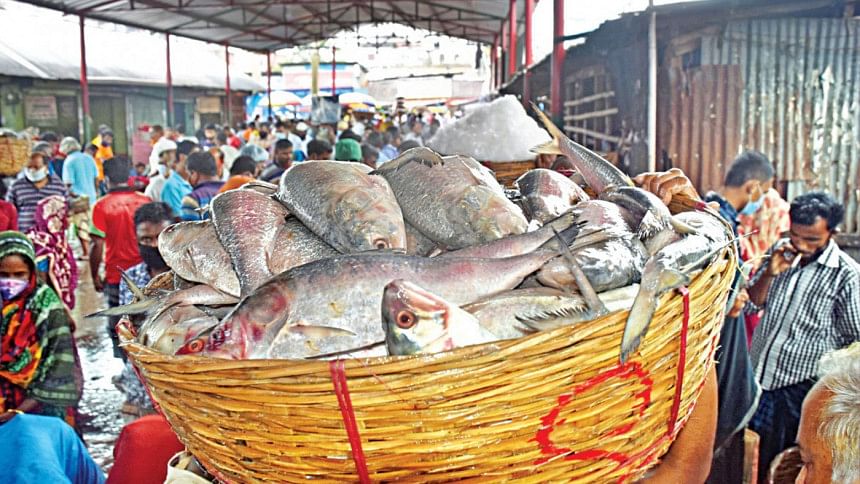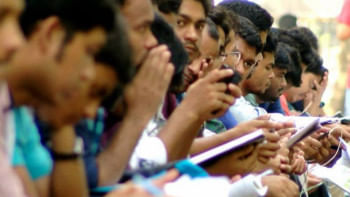Aquaculture 4.0 and the Bangladesh perspective

Anyone who studied Bengali literature at some point in their life must know about "Titash Ekti Nadir Naam", the magnum opus of the writer Adwaita Mallabarman who drew a poignant picture of the uncertain life of fishermen. Rivers and fish have always been an inseparable part of our existence. A Bengali is nothing if not one enamoured with fish and rice, as the old adage goes. The plight of the fishermen, however, has diminished with the change of time. We are now on the verge of producing smart fishermen in a country undergoing a rapid digital transformation, where it's hard to find someone who neither uses nor is within the reach of a smart mobile phone. It is undeniable that the last two decades have seen a radical shift in this nation's technology industry and how it connects with other industries and even ordinary people. There are more than 161 million mobile phone subscribers in Bangladesh, of whom around 92 million reportedly have access to internet.
The countrywide optical backbone network and connectivity coverage are helping Bangladesh move forward faster. We also have Bangabandhu Satellite-1, which is strong enough to reach even adverse, otherwise unavailable and distant corners. Mobile internet, wireless broadband, and fixed broadband are the three forms of internet access empowering approximately 92 million people, 94 percent of whom reportedly rely on mobile networks. And since 2018, Bangladesh has introduced the 5th-generation experimental transmission following the 4th generation, the advantages of which may not take long to reach everyone. Once they do, anyone in Bangladesh, sitting anywhere in the country, can easily hope to compete shoulder-to-shoulder with their rivals in the developed world.
The concept of smart agriculture may already be familiar to many thanks to "e-Village", a project of the Centre for Research and Information (CRI). This is the first smart-agriculture innovator in Bangladesh developed by indigenous scientists, where farmers can instantly know the state of their field, sitting at home. Equally, the concept of smart fishing is fast gaining ground, too.
There was a time when people would be surprised by the talk of fish farming or aquaculture in ponds. Today, Bangladesh is the third leading inland fisheries producer in the world, behind only China and India, according to a report of the UN's Food and Agriculture Organization (FAO). This is indicative of the steady upward movement of the fisheries sector in Bangladesh, aided, among other things, by the deft use of information technology.
With the help of technology, field-level scientific and social problems related to fishponds such as lack of oxygen, increase in ammonia, oversupply of food, theft of fish, poisoning of water, etc. can be solved, sitting at home, simply by using real-time and need-based information. Technology can be a real boon to fish cultivators and fishpond operators. It can also eliminate the need for waiting for so long to find out a solution through laboratory testing of water samples and so on.
As for digital marketing of fisheries, use of various social media sites such as Facebook has already become popular. The use of mobile apps has attracted the attention of many as well. Several government and private mobile apps such as Chingri, BD Fishpedia, Rupali, Fish Bangla, Bangla Fishing Baits, etc. are helping the fish farmers. Besides, some foreign companies, such as XpertSea, which is a Canada-based company, are reportedly going to start experimental technology testing on shrimp farms in Bangladesh soon. The most promising thing in this aspect is that not only foreign firms and researchers, but indigenous researchers are also making progress to solve different concerns related to fish farming through the use of Internet of Things (IoT), artificial intelligence, machine learning, etc. A digital pathway can modernise and diversify aquaculture production and bring in sizeable profits for all stakeholders.
Among the direct consequences of using technology in fish farming are: increasing fish production, reducing production costs, increasing exports, maintaining fish quality, controlling overfishing in wildlife, and saving endangered species. The entry of related technology can help create new jobs in the market on the one hand, and open the door to new areas of research on the other. But timely planning and decision making are essential in areas such as fish production, conservation of mother Hilsa, raising awareness, etc. Research by home-grown scientists are already advancing the fisheries sector by an average of 5.26 percent per annum (Fisheries Statistics 2016-17). As a result, the Department of Fisheries under the administrative control of the Ministry of Fisheries and Livestock expects to increase the fish production target from 4.2 to 4.5 million metric tons in 2020-21.
According to Statista 2020, more than 21 billion IoT-connected devices are going to be included in the world by 2025. This will benefit every sector that relies on technology. To keep pace with the transformation, the inclusion of technology in various fields and sectors began in the country since 2009, and we are now on the threshold of reaching the Digital Bangladesh goals. The Covid-19 epidemic has made it clear, once again, how difficult it is to move forward in this day and age without proper use of digital technology.
To advance the fisheries sector in Bangladesh, we need to prepare for what can be called the 4th Fisheries Revolution (or Aquaculture 4.0) in line with the 4th Industrial Revolution. Some existing gaps such as lack of seamless network coverage and proper technological knowledge can be bridged if everyone works with the same spirit from their own position. This would be feasible if experts from various fields such as information technologists, fishermen, ecologists, policymakers and above all the marginal fish farmers work in collaboration.
Dipika Roy Prapti is a postgraduate research student at the faculty of engineering, Universiti Putra Malaysia, Malaysia. Email: [email protected]

 For all latest news, follow The Daily Star's Google News channel.
For all latest news, follow The Daily Star's Google News channel. 



Comments